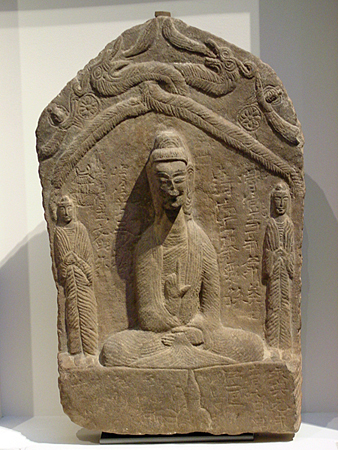Déjà Vu Once Again: Old Collections and New Discoveries from Shaanxi Province
Lecture on Tuesday, July 6, 2010, 6 pm, Room 311
Speaker: Stanley Abe, Duke University
Abstract
In A Freer Stela Reconsidered (2002), I discussed a group of small sixth-century stone stele identified as being of the “Fuxian” style. These stele were obtained in China in the early twentieth century and are found in collections in Japan as well as France, Germany, and the United States. Works in the Fuxian style are related to other types of Buddhist and Daoist sculpture known from Shaanxi province Yet, it is odd that this specific type of small, pointed-arch stele had not been found in Shaanxi. The significant number of Fuxian style stele long in foreign collections and their almost complete lack in Shaanxi raised numerous questions concerning authenticity.
Recently, however, near exact duplicates of several Fuxian style stele have been discovered in Shaanxi province. In this paper, I will revisit the problem of the Fuxian style in light of such new materials. The problem of the Fuxian style stele continue to raise difficult to resolve questions around the making of copies and modern forgeries of Chinese sculpture as well as the limits of connoisseurship and art history.
Image: Stele, Northern Wei dynasty, dated 528, Red sandstone, 54 cm. high, Musée National des Arts Asiatiques Guimet EO 1324
Stanley Abe
has published on Chinese Buddhist art, contemporary Chinese art, Asian American art, Abstract Expressionism, and the construction of art historical knowledge. His book Ordinary Images (2002) was awarded the 2004 Shimada Prize. His current research is on the movement of sculpture out of China in the early twentieth century and how Chinese sculpture became a category of Fine Art.


